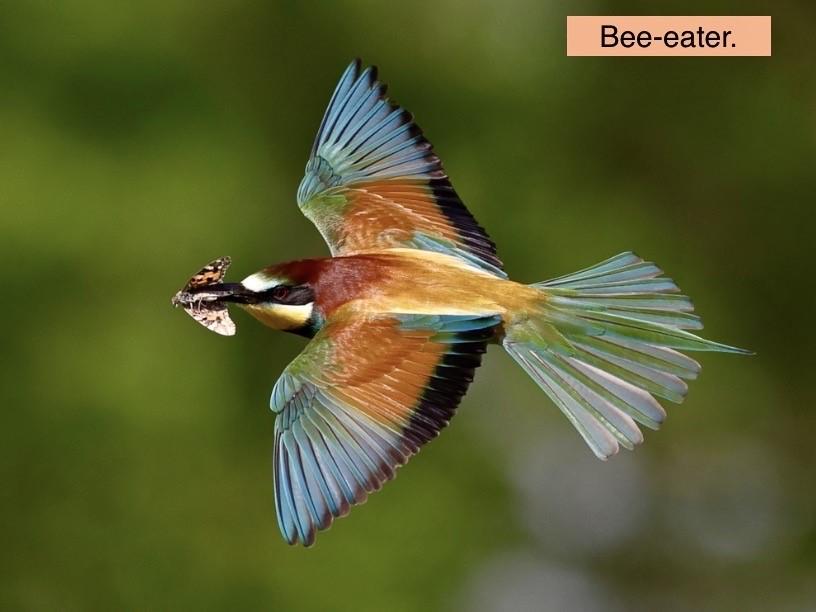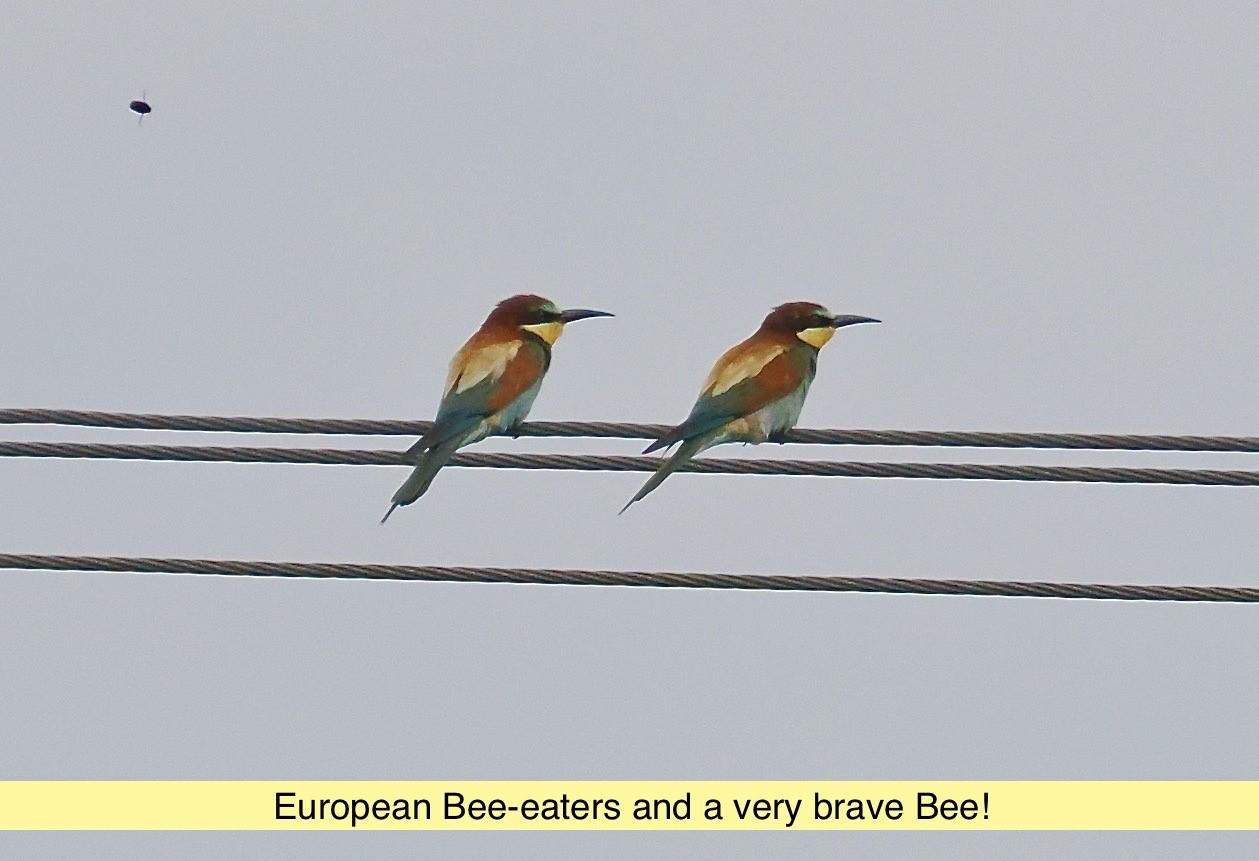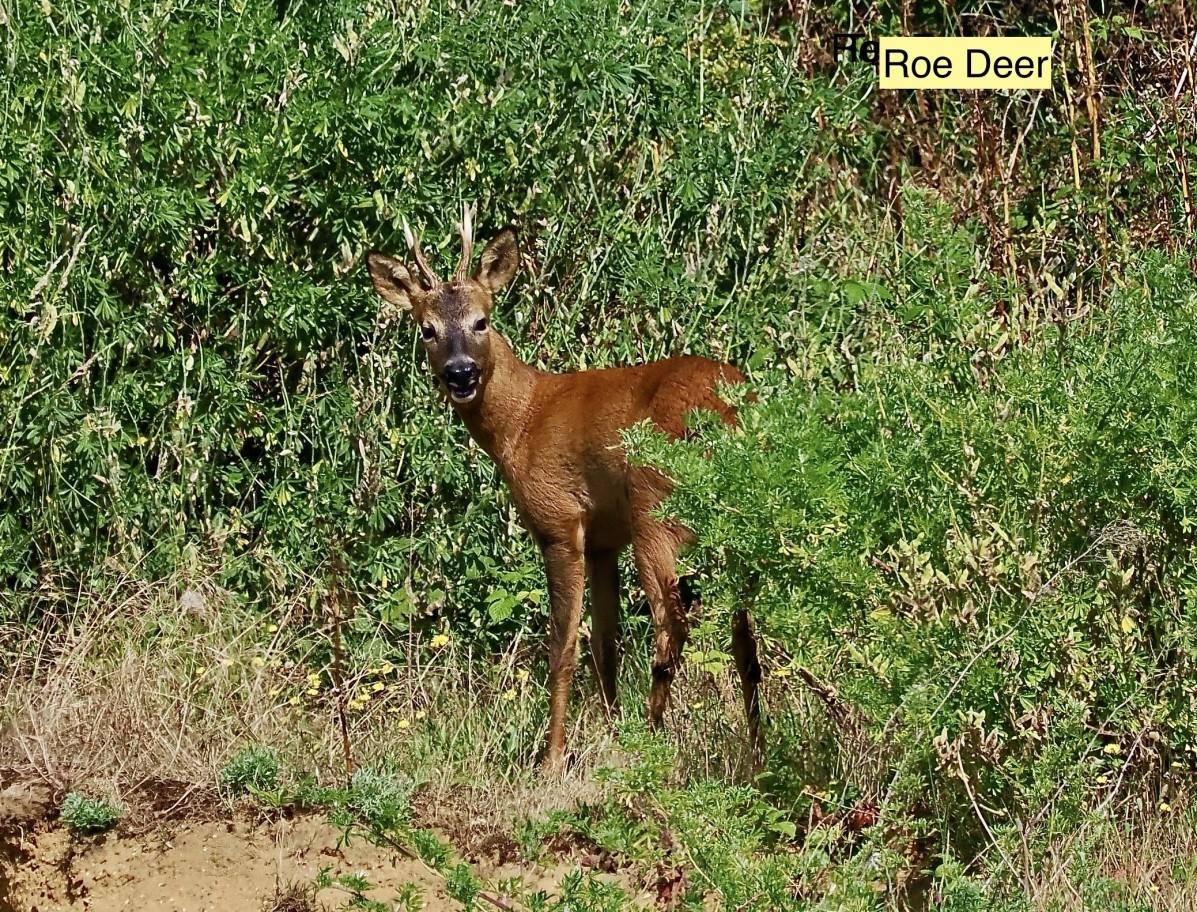
4 minute read
Nature's Corner
Nature’s Corner – Cornel Nature
Not the end of the Rainbows.
As climate change makes its presence known in the UK and Europe, it’s not surprising that quite a few species of birds and sea creatures are moving further North to breed and feed in and around our shores.
Egrets, members of the Heron family are a prime example with three species now breeding in wetlands around the UK with the Little Egret having established itself as a breeding bird in 1996 in Dorset and now widespread with large colonies in Conwy, Burton Mere and Bangor with individuals often seen on the lower reaches of the Afon Ffyddion in Rhuddlan and on the river Clwyd; they are pure white with black legs and huge yellow feet. Great White Egrets and more recently Cattle Egrets are moving into these wetland areas too along with Spoonbills which are very impressive and often seen at RSPB Conwy.
Another species that has begun to move here in small flocks is the European Bee-Eater; a stunningly beautiful bird that has bred in the UK on the odd occasion, being only an offcourse migrant to Southern England until recently, also often referred to as “Rainbow birds” due to their beautiful multi coloured plumage.
In June 2022, seven of these beauties nested at a disused quarry in the small village of Trimingham near Cromer, Norfolk producing three youngsters in all before returning to their Tropical African home.
So, whilst staying nearby with relatives during July of this year (2023), we decided it would be rude not to pay a visit to see what all the fuss is about.
By all accounts 20 birds had turned up at the quarry site during May but only three had remained with a pair nesting in June. The nest itself is usually at the end of a short tunnel burrowed into a steep sided sandbank quite often on a rivers edge. In the case of the pair at Trimingham the nest appeared to be on quite a gentle slope. Sadly, it was predated possibly by a Stoat but luckily the birds had stayed and tried again.

The RSPB have set up a viewing area from an adjoining field which gives good if distant views of these very agile and entertaining creatures, telescopes are on hand as the birds spend much of their time perched on overhead cables at one end of the quarry probably about 150 to 200 metres away.
From here they spring up in the air with such amazing agility to catch Butterflies, Dragonflies and of course Bees, never seeming to fail, they return to the cables to eat their prey, sometimes tossing them in the air having stunned them and swallowing whole.
It is easy to appreciate their stunning plumage even from this good distance especially with binoculars or a scope as they will perch for decent lengths of time.
One nice bonus whilst at the site was a handsome Roe deer walking just past the nest and up the bank before turning to look at all the spectators in bemused fashion and then melting into the surrounding shrubbery: one of only two of our true native species of deer rarely seen in North Wales.
One nice bonus whilst at the site was a handsome Roe deer walking just past the nest and up the bank before turning to look at all the spectators in bemused fashion and then melting into the surrounding shrubbery: one of only two of our true native species of deer rarely seen in North Wales.

Hopefully these spectacular, agile, charismatic, brilliantly coloured birds will continue to frequent the UK in future and if you are up in the Trimingham neck of the woods during 2024, they are well worth a visit between May and early August before they return to Africa.
There are other sites that have seen these birds breed in small numbers too in the UK, so we can but hope that they will at some point in the future set up home nearer to us here in North Wales










